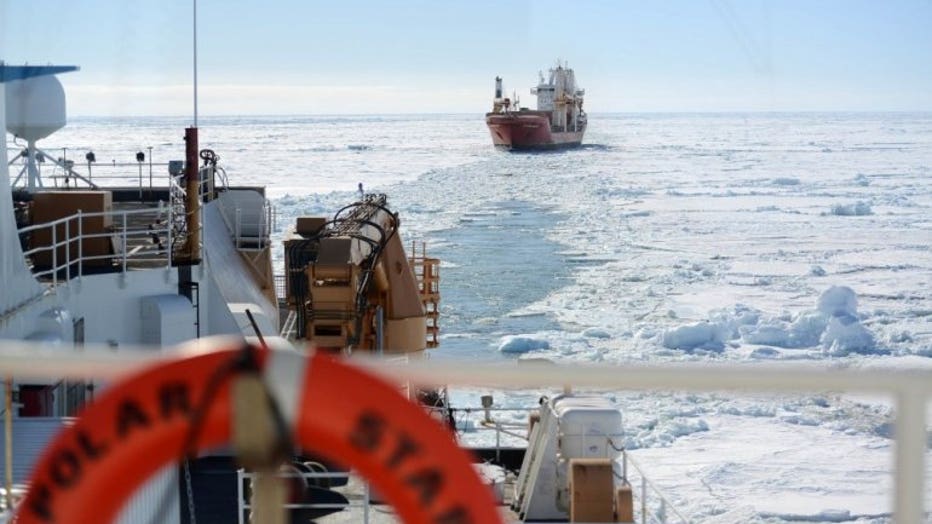Seattle-based Polar Star icebreaker returns home following Antarctic mission
SEATTLE — The crew of the Coast Guard Cutter Polar Star is returning home Friday from an expedition to Antarctica where they supported Operation Deep Freeze 2017, the U.S. military’s component of the National Science Foundation managed U.S. Antarctic Program.
Polar Star’s crew facilitated the annual resupply and refueling of two research stations, McMurdo and Amundsen-Scott South Pole, by escorting two cargo vessels through more than 70 miles of thick Antarctic ice.

The crew of the motor vessel Ocean Giant lines up with the U.S. Coast Guard Cutter Polar Star as they prepare to be escorted to the National Science Foundation’s McMurdo Station, Jan. 25, 2017.(U.S. Coast Guard photo by Chief Petty Officer David Mosl
Polar Star required significant repairs in advance of the 107-day deployment, including a major overhaul of the ship’s power plant. Additionally, the 40-year-old cutter experienced numerous engineering and mechanical issues throughout the mission, testing the training and skills of the 150-person crew.
Polar Star made a scheduled port call in New Zealand after successfully completing operations in Antarctica. The crew also aided the New Zealand Defense Force and local rescue and safety personnel in their response to the Port Hills Wildfire in Christchurch, New Zealand.
Homeported in Seattle, the 399-foot long cutter weighs 13,500 tons, and uses 75,000 horsepower to muscle its way through ice up to 21-feet thick. Built in 1973 and commissioned in 1976, Polar Star is the world’s most powerful non-nuclear icebreaker. The cutter is also the United States’ only operational heavy icebreaker capable of conducting Antarctic resupply missions.

